Today we’re looking at the “Ethereum Arrow Glacier Upgrade, EIP-4345: Difficulty Bomb Delay”. It contains a simple modification proposal (relative to the other upgrades) that Ethereum implemented in block number 13,773,000 on December 9, 2021. Now, you might be wondering, “why are you just now writing about a simple upgrade Ethereum released six months ago?”. Well, it’s because the Ethereum Arrow Glacier upgrade delays the “difficulty bomb” until this month (June 2022). That makes it significant today.
Like Ethereum’s Muir Glacier, the Ethereum Arrow Glacier upgrade alters the difficulty bomb by delaying it. Ethereum also pushed the difficulty bomb back in Ethereum’s Byzantium, Constantinople, and London upgrades giving Ethereum 2.0 devs more time to prepare for the transition to PoS. Notably, a common theme of Ethereum upgrades is the difficulty bomb extension.
Your next question will likely be, “what is the Ethereum difficulty bomb?”. Also, odds are you might be wondering, “what is The Merge?” and “what is an EIP?”. These are some of the questions this article will answer because even though the Ethereum Arrow Glacier upgrade is relatively simple in its language, it ties into other factors all pushing towards The Merge.
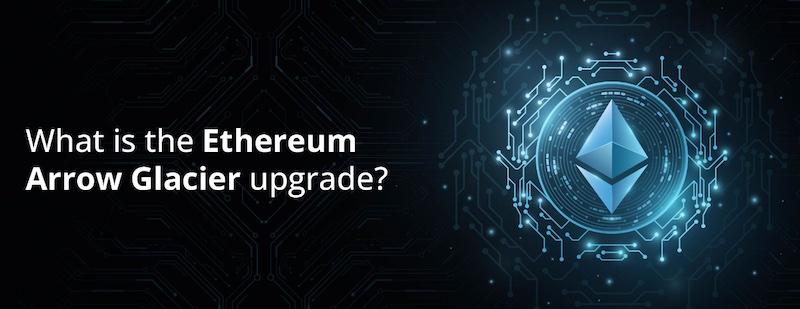
If you’re unfamiliar with Ethereum and want to get a better handle on it, check out the best Ethereum courses at Moralis Academy. The Ethereum Fundamentals course is an excellent place to start!
PoS vs PoW
When multiple factors drive toward a common goal, such as The Merge, it can be challenging to know where to start the analysis. In most cases, the best place to start is the beginning. So, let’s begin with consensus mechanisms and work our way back to the difficulty bomb.
The Ethereum Arrow Glacier upgrade aims to help the network move away from proof-of-work (PoW) to the proof-of-stake (PoS) consensus mechanism. So, if you’re wondering if Ethereum is running PoS yet? The answer is “no.” Further, if you’re confused about PoW vs PoS, you can visit the Moralis Academy blog, as there are plenty of articles on both consensus mechanisms.
For our purposes, know that the PoW mechanism (like Bitcoin uses) is becoming more controversial because of its energy demands and negative environmental impact. Hence the main reason Ethereum is moving away from it.
So, the Ethereum Arrow Glacier Upgrade is about keeping the network on track in its move to PoS and is an essential upgrade for miners, stakers, and regular users where the Merge is concerned.
The exorbitant gas fees and network congestion so prominent on Ethereum led developers and users alike to search for alternative solutions. Solana is one of them. You can learn more about Solana vs Ethereum in one of our latest articles. Or for more information, check out the Rust & Solana article!
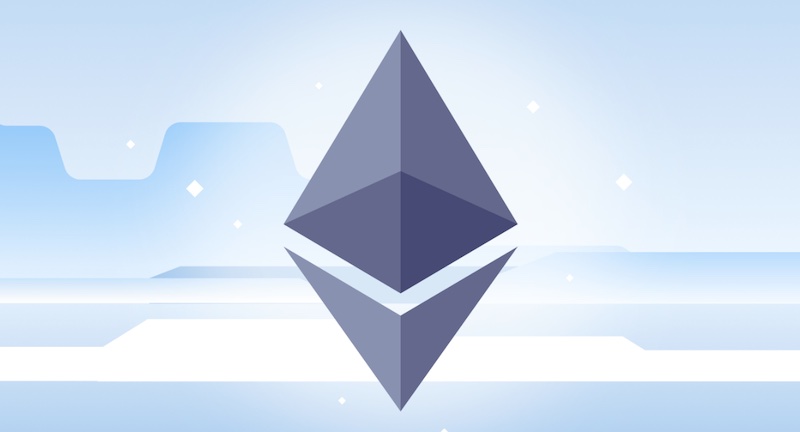
Ethereum 2.0 – The Merge
When considering market capitalization, Bitcoin is still the oldest and largest blockchain. However, Ethereum fans expect theirs to become the world’s most widely used, energy-efficient, and robust blockchain network. The Ethereum Merge could be the best telegraphed technical event in the history of digital assets. But don’t be confused by the term. Ethereum founders weren’t exactly excited with the “Ethereum 2.0” moniker. So they’ve been pushing “The Merge” rebranding effort as its replacement name because it’s more accurate linguistically.
So, The Merge is not a new Ethereum but rather an upgrade to the PoS consensus layer. It keeps the original vision for Ethereum alive but leaves the environmentally antagonistic PoW mechanism behind.
Bitcoin is still the most prominent cryptocurrency, and you can learn more about it in the Blockchain and Bitcoin Fundamentals course at Moralis Academy.
“When Merge?”
Tim Beiko of the Ethereum Foundation has been fielding the same question seemingly for eons – “when merge?”. To paraphrase him in a recent interview, The Merge could happen today, and the network would function. However, the number of minor bugs that could still flare up would make an early release counterproductive. The time it would take to hunt and fix the bugs makes it unreasonable to launch The Merge at this point. In short, the developers need more time.
Those interested are excited by the prospects, believing it will bring short-term price gains. But those looking at the long-term technological advancements have even more reasons to get excited. However, The Merge is a significant change to the Ethereum network and not without its fair share of execution risks – especially in the DeFi sector. Can you imagine what would happen to all the correlated transactions if Ethereum went down for even ten minutes? It wouldn’t be pretty.
Hence, there’s no point in rushing The Merge regardless of how impatient users get. That said, Beiko estimates that the soonest we can expect to see The Merge completion is towards the end of August, and the latest would be the end of the year. Unless, of course, unforeseen factors arise to delay developers further.
You probably agree that bear markets are no fun, and this latest one is no exception. That’s why now is the right time to learn how to invest during a crypto bear market.
The Beacon Chain’s Role
Many factors need to come together to complete The Merge, but Ethereum’s Beacon Chain is a prominent one. It is an independent network using the PoS consensus mechanism that runs in tandem with the Ethereum mainnet. Remember, the mainnet, or “Ethereum 1.0”, still uses the PoW consensus mechanism.

By keeping the PoS chain and the main network separated, devs can get the kinks out of the solution chain (Beacon Chain) without putting the current Ethereum PoW chain (and any of the applications running on it) at risk.
Since its launch in December 2020, Beacon Chain has been a success with no downtime. While Beacon Chain provides the solution to transitioning the Ethereum consensus mechanism, the two networks will not exist side by side forever. As the PoS consensus layer gets merged to replace PoW, Ethereum’s history on the PoW mechanism will remain. This upcoming technological feat is called The Merge. After completion, the PoW consensus layer goes away, and the new PoS consensus layer will take care of the future blocks on Ethereum. Furthermore, The Merge will take place with none of the transactions getting lost in this transition – even if a user starts a transaction on the PoW chain and finishes it on the PoS chain.
Ethereum Improvement Proposals (EIPs)
EIPs specify potential new processes or features for the network. EIPs contain the tech specs for the proposed changes. They also serve as a source of truth for the Ethereum community. Further, the EIP process is where upgrades and standards get developed. You might be wondering why we are investigating how EIPs work. We do so to understand better the “Ethereum Arrow Glacier upgrade, EIP-4345: Difficulty Bomb Delay”.
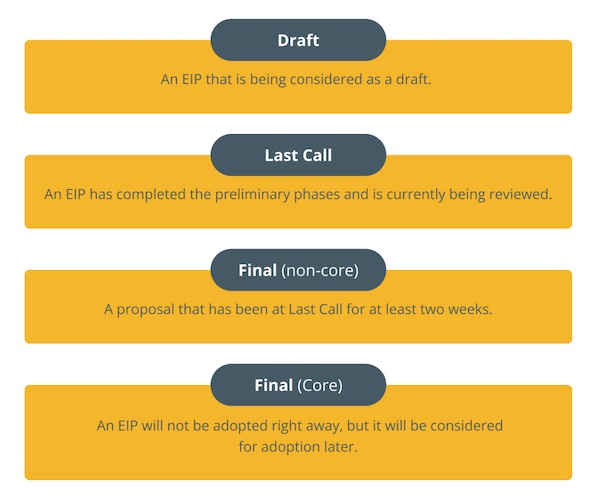
First, the community creates and reviews EIPs. However, each EIP undergoes a thorough review procedure. Multiple entities have to agree on the proposed change before upgrading the network. These entities include developers, editors, and the community. Below is how the process works.
The EIP Process
1. Idea
The EIP repository does not track an idea that is pre-draft.
2. Draft
EIPs in development and under consideration are in the draft stage. This is the stage where it is first formally tracked.
3. Review
The EIP is ready for peer review.
4. Last Call
This stage is where EIPs are under final review after completing the preliminary phases. It’s the last review before an EIP moves to the final stage. An EIP editor assigns the “last call” status and sets a review end date that’s usually 14 days later. They can revert the EIP to review if changes are necessary during this period.
5. Final
EIPs that have been at the last call stage for a minimum of two weeks are in a state of finality. That means no more updates except to make clarifications.
6. Stagnant
Some EIPs don’t get adopted immediately but can remain in consideration for a later time. If an EIP in the draft or review stage remains inactive for six months or longer, it gets moved to “stagnant”. However, EIP authors or editors have the power to move the stagnant EIP back to the draft stage.
7. Withdrawn
This state has finality, which means editors and authors cannot resurrect the EIP as they can with a stagnant EIP. So, if the idea behind this EIP gets revisited, it must be considered a new proposal.
8. Living
EIPs in the living stage are to be continually updated and don’t reach the final state.
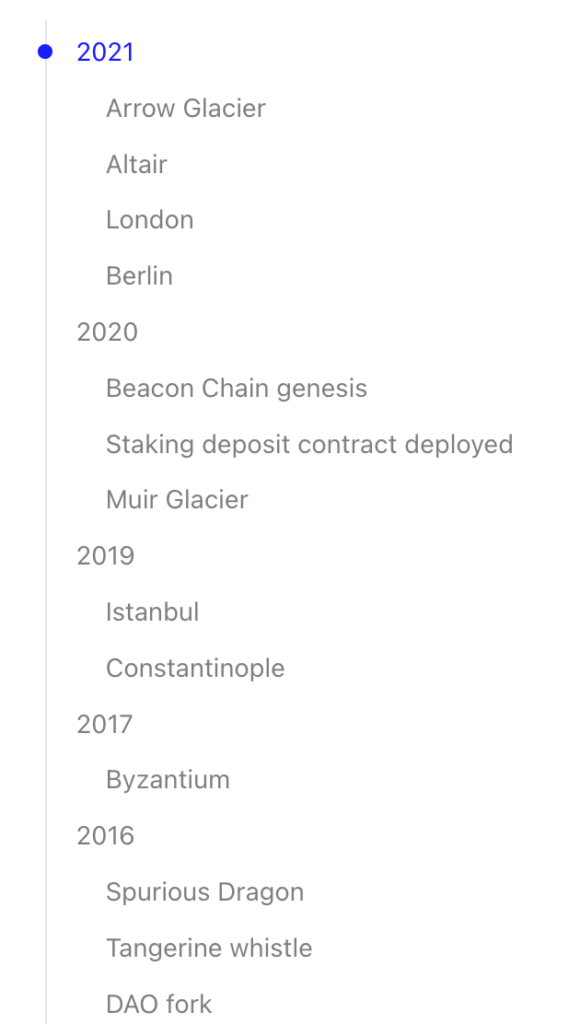
Exploring EIP Categories
Now that we’ve looked at the multiple steps each EIP must go through before adoption, let’s look at some categories.
Standard Track EIPs
This type of proposed change affects all (or most) Ethereum implementations. These can include changes to transaction validity rules, the network protocol, or application interoperability. Standard track EIPs fall into the following categories:
1. Core EIPs
These EIPs require a consensus fork and proposed changes that don’t necessarily demand consensus but are relevant to core developer discussions.
2. Networking EIPs
These EIPs work towards improving network protocol definitions.
3. Interface EIPS
User interface EIPs enhance user standards. They can include improvements to client standards and specifications and language-level standards.
4. Ethereum Request for Comments EIPs
These EIPs deal with application-level standards that include wallet formats and token standards.
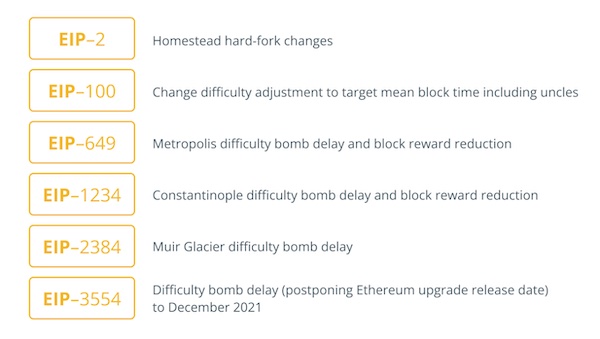
Other EIPs
Meta EIPs
These EIPs are like the “standard track” type but aren’t related to the network protocol. Instead, they apply changes to other areas such as guidelines, procedures, and decision-making. Meta EIPs are also called “process EIPs.” Further, they are stronger than mere recommendations since users can’t typically ignore them.
Informational EIPs
This kind of EIP describes an Ethereum design issue without proposing new features. Informational EIPs don’t always represent community consensus or recommendation. Thus, users can either ignore or follow them.
The only Ethereum Arrow Glacier upgrade proposal is EIP-4345. As stated, it extends the Difficulty Bomb to give developers more time to work on the ETH 2.0 transition. Now that we have the components in context, we’re ready to move to the Difficulty Bomb.
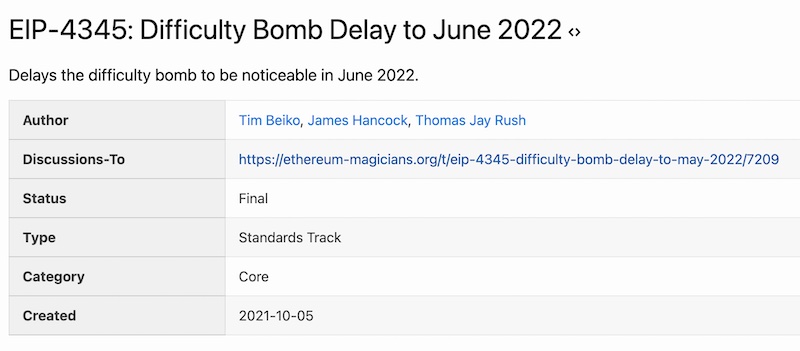
Ethereum Arrow Glacier Upgrade – Difficulty Bomb
Ethereum Arrow Glacier does not introduce any new changes. However, it does extend the difficulty bomb. This difficulty bomb is a significant milestone on the road to The Merge, and it will launch Ethereum’s “Ice Age” stage, the period when miners can no longer mine ETH.
The difficulty bomb is self-explanatory in that it does what it says. When the bomb drops, it will increase the difficulty level of puzzles in the PoW mechanism at a predefined block. The difficulty will increase exponentially over time, leading to the “Ice Age”, when the PoW chain will become so difficult to mine it will stop producing blocks. In other words, this adjustment will render mining uneconomical and motivate miners to move to PoS while simultaneously discouraging them from maintaining the PoW chain after the rest of the community switches to PoS.
The core devs at Ethereum are progressing toward The Merge. However, the PoS modification on the mainnet will require additional time. Thus, they’ve delayed the difficulty bomb several times. The Ethereum Arrow Glacier upgrade is interesting because it signals the final leg of the difficulty bomb before The Merge.
Crypto markets are volatile. That’s why you need to protect yourself in the future by understanding crypto crashes.
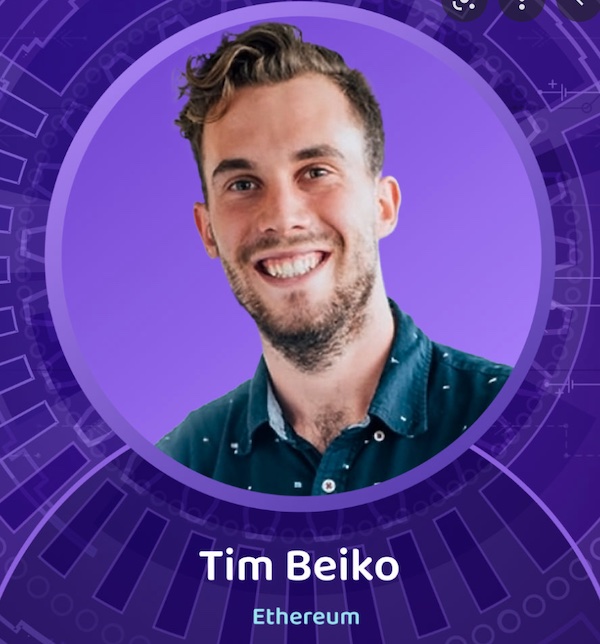
The Ethereum Arrow Glacier Upgrade – Conclusion
Ethereum’s latest upgrade will not impact the average user immediately as there is no change to average transaction times or costs on the network. Although it doesn’t offer any relief from high gas fees or scaling issues, it is helping bring The Merge to completion, which according to Tim Beiko, should happen sometime between mid-August to late December this year.
That means you have time to start working on your blockchain career before The Merge happens. Ethereum needs developers, and Moralis Academy has all the classes you need. Learn how to become a blockchain developer today!




